July 2024
Munstead Wood
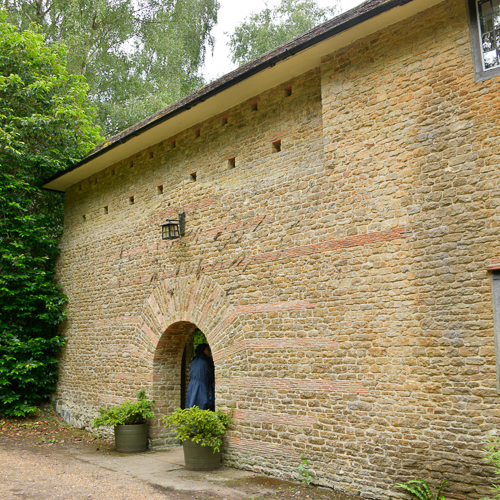
Munstead Wood
Munstead Wood is a collaboration between Gertrude Jekyll and Edwin Lutyens. A collaboration of the finest quality and achieved perfection. The garden was the creation of Jekyll, who became widely known through her books and prolific articles in magazines such as Country Life. The Arts and Crafts style house in which Jekyll lived from 1897 to 1932 was designed by architect Edwin Lutyens.
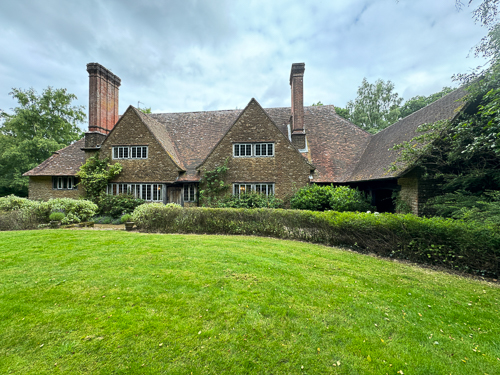
The house, which is not open to the public, was designed by a young Edwin Lutyens (At 19, with very little training, Lutyens had already opened his first office when he met Jekyll). The house is constructed from Bargate stone and other local materials. It was completed in 1897.
This was the first collaboration between these two titans of design in what would amount to as many as 120.
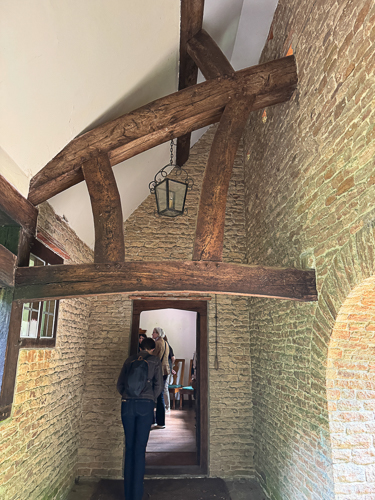
The Munstead timbers that make its structure were all harvested from the surrounding area, including some of the trees Jekyll actually remembered from her childhood. Local craftspeople were employed in the construction, and the house embodies Arts and Crafts principles.
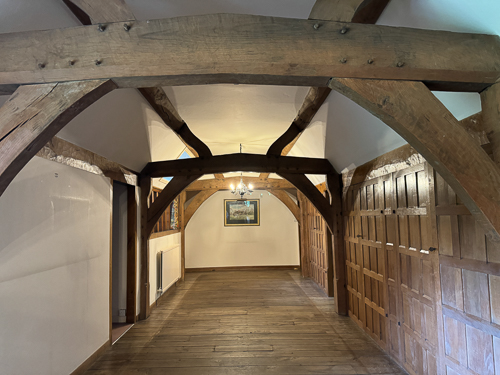
*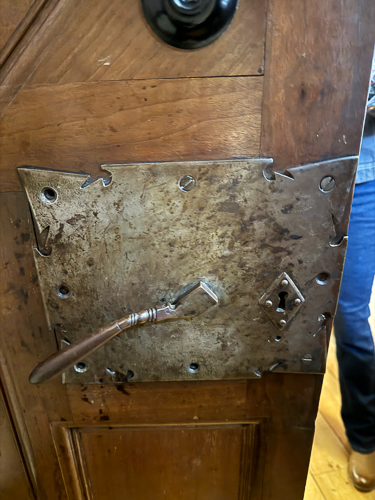 *
*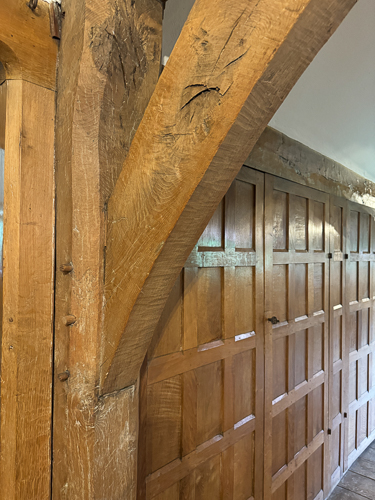
The home was in private hands for many years. In 2023, the National Trust purchased 11 of the original 15 acres. A restoration program had begun in the 1990s, reinstating parts of the garden, but some modern interventions remain, such as a swimming pool and driveway. The National Trust is now grappling with the many issues of owning a home that not only needs restoration but also small things such as access for the general public and a garden that will take, at a minimum, ten years to restore.
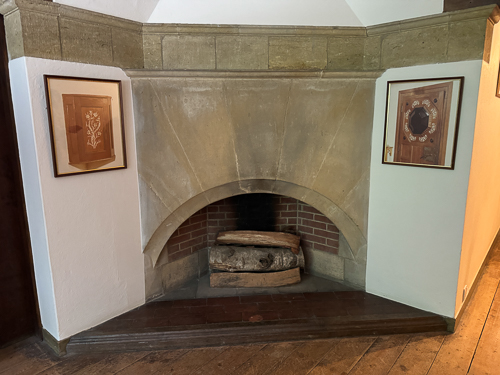
*
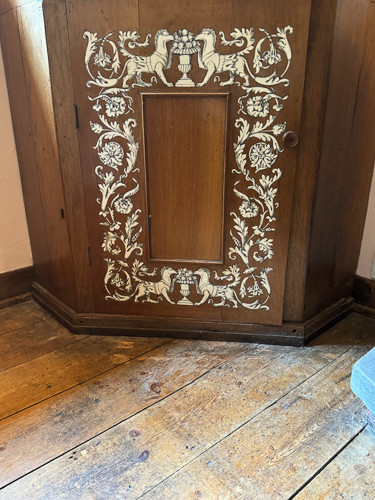
Jekyll’s design
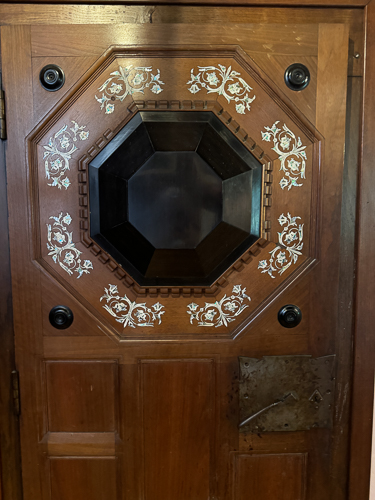
The inlay on the door to her workshop was all Jekyll.
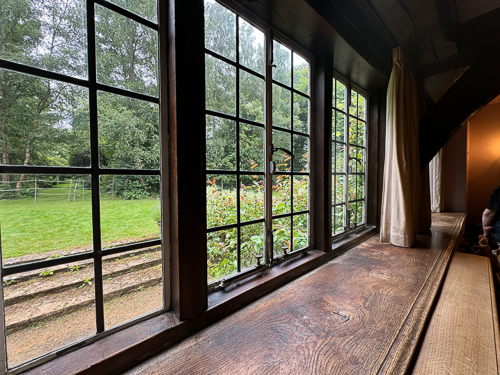
At Munstead, original trees and plants have been identified, but loss has occurred due to the passing of time and a changing climate. Of the over four hundred gardens Jekyll designed, only a handful remain.
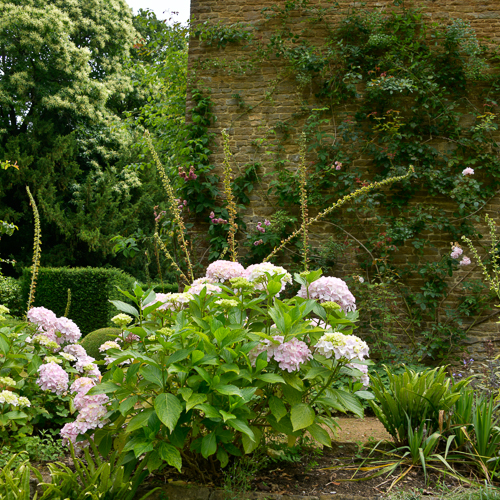
Ms Jekyll transformed horticultural practices and gardens nationwide until her death in 1932.
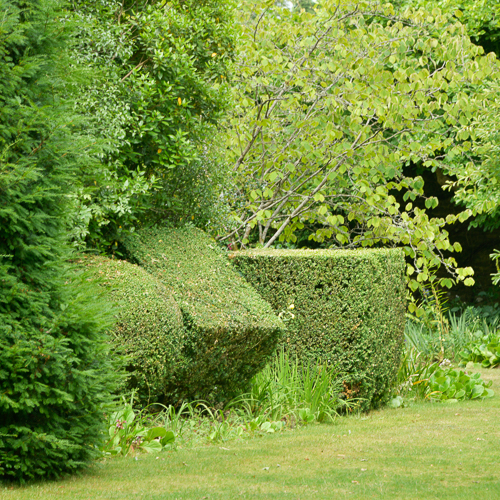
She introduced more than 30 new varieties of plants collected across Europe and inspired others to take up gardening through her books and over 1,000 articles.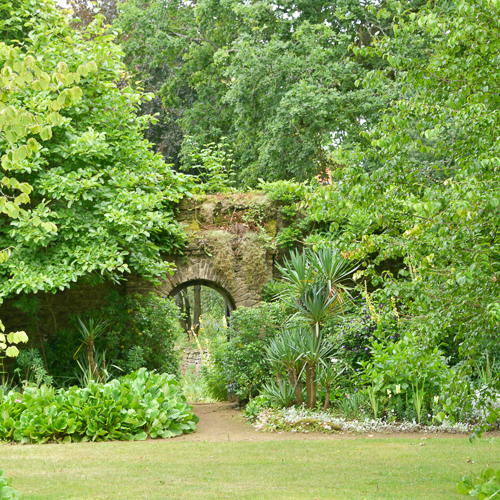
Ms Jekyll was also the first woman to be awarded the Royal Horticultural Society’s Victoria Medal of Honour.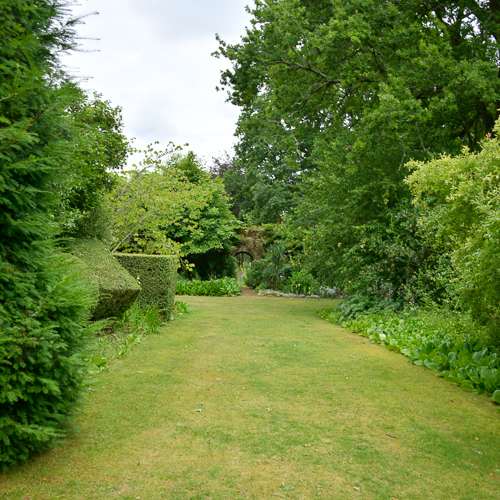
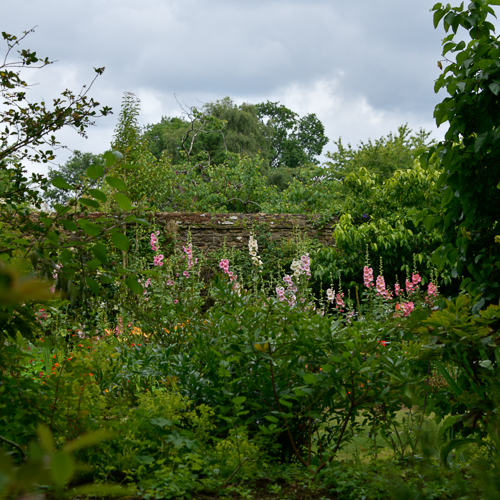
Munstead Wood plainly shows the importance of seasonality to Jekyll
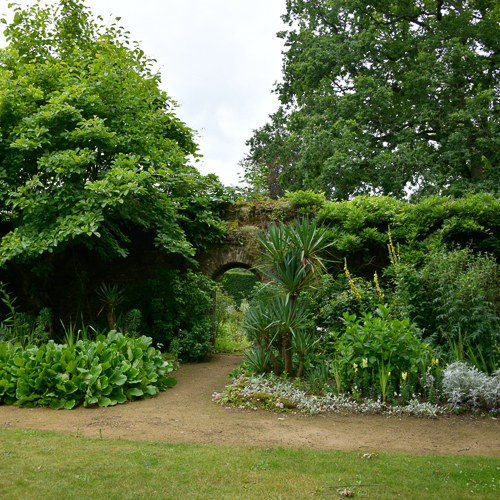
Jekyll’s choice of plants was influenced by the various phases and travels of her life. She included shrubs and plants, which were features of her childhood home in Bramley, a village near Munstead Wood. These included Amelanchier, Kalmia, Andromeda, and Leycesteria.
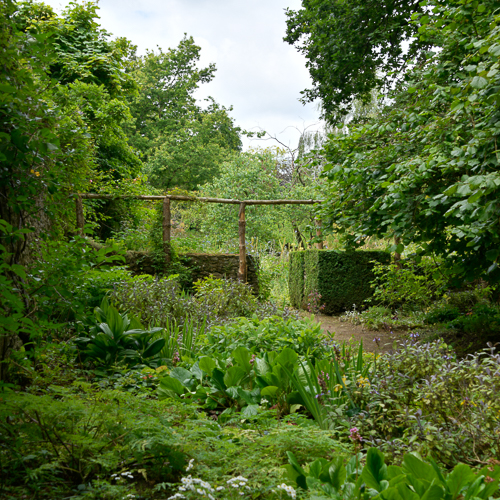
Extensive travel in her young adulthood also inspired Jekyll to use many Mediterranean and exotic plants she encountered to add scent, texture, and silver foliage to Munstead Wood. These include bay, myrtle, rosemary, santolina, and Iris stylosa. Exotics such as cannas, euphorbias, and yuccas also held special memories and were chosen because they thrived particularly well in the poor sandy soil at Munstead Wood.
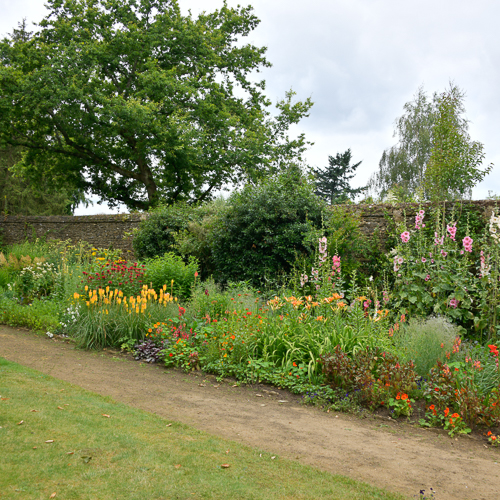
Jekyll chose plants for their shape, texture, habit, scent, or color.
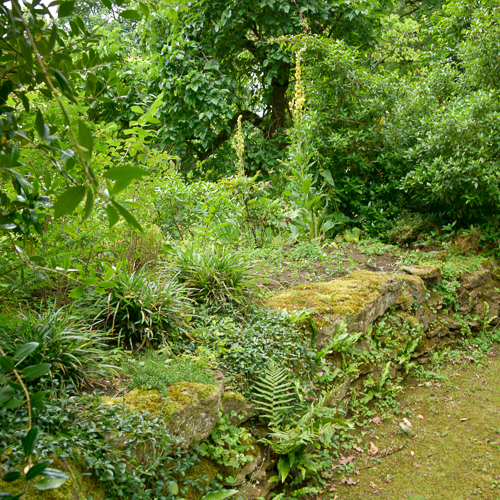
At some point after Jekyll’s death, this Sunken Rock Garden was filled in and leveled to form a lawn. In the 1990s, while the then-head gardener was working in that part of the garden, he discovered that the rocks, steps, and paths were still in their original positions with soil and rubble infill.
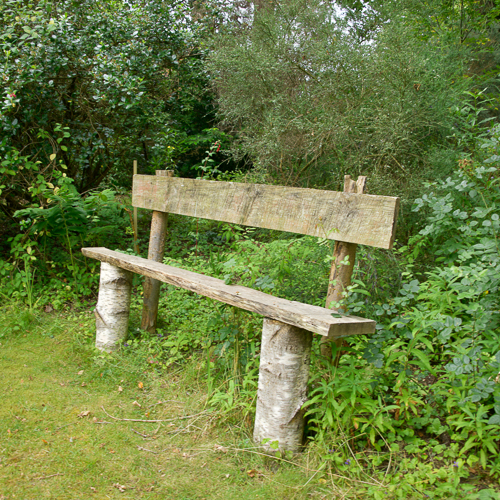
*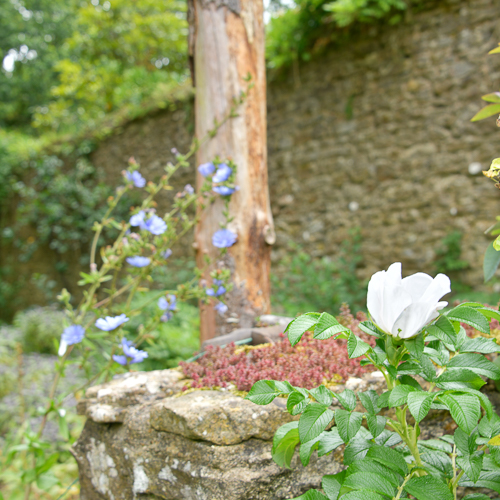 *
*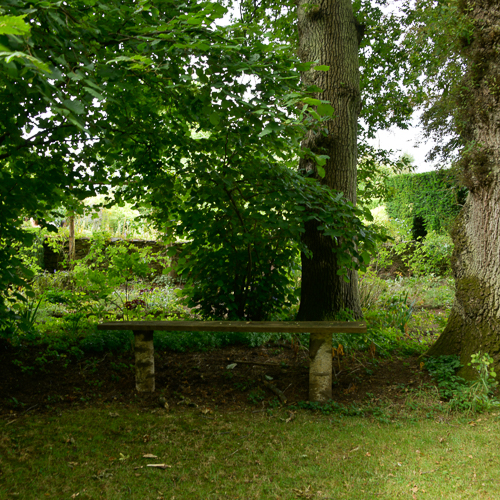 *
*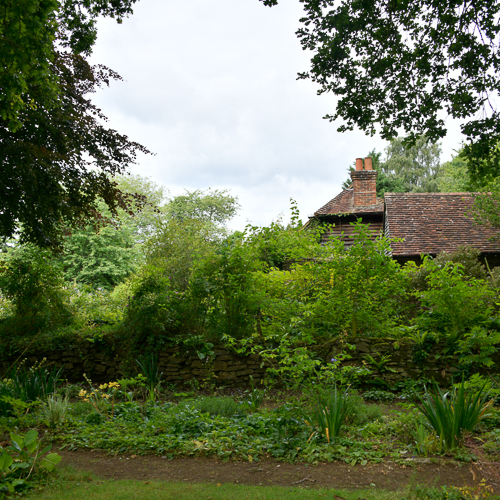 *
*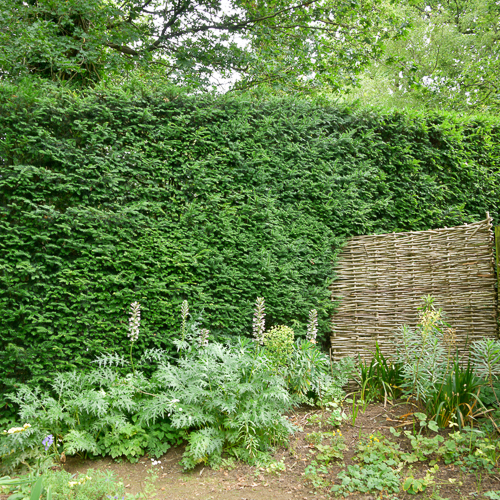 * *
* * *
*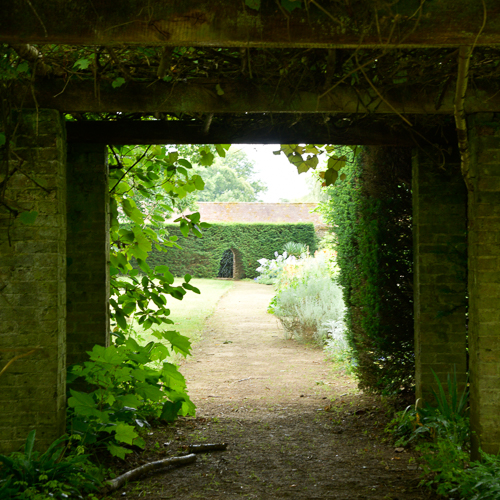 *
*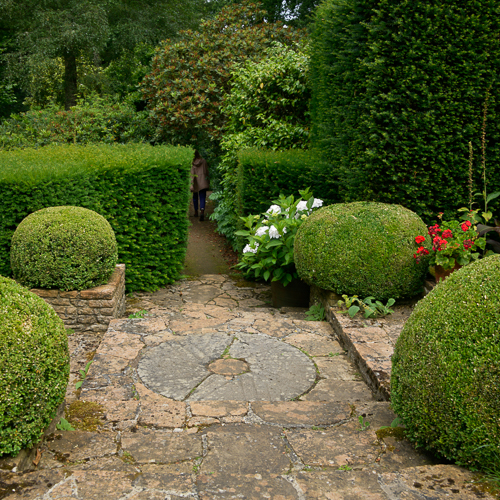 *
* *
*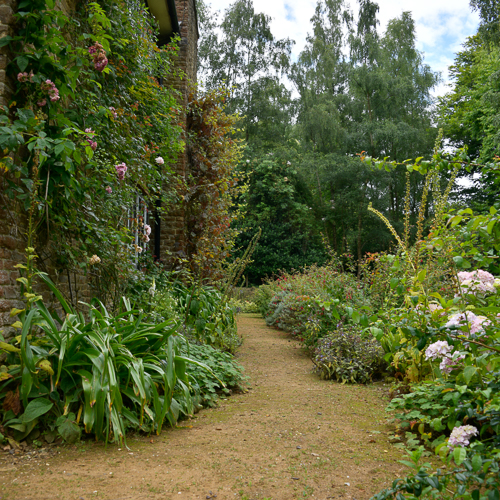
Jekyll’s garden became famous through her writing and photographs. Her approach to gardening, use of color, and choice of plants were widely admired. With so many gardeners following her example, her planting ideas have changed gardens forever.
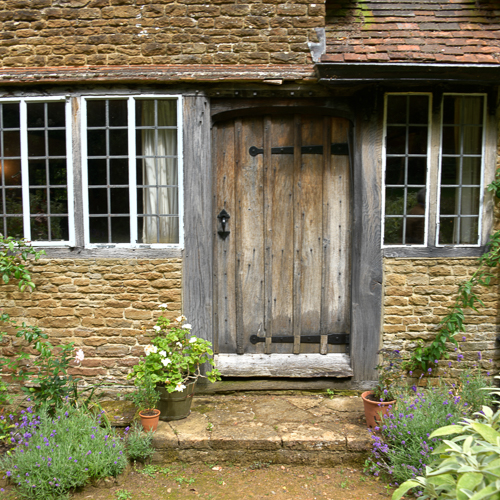
*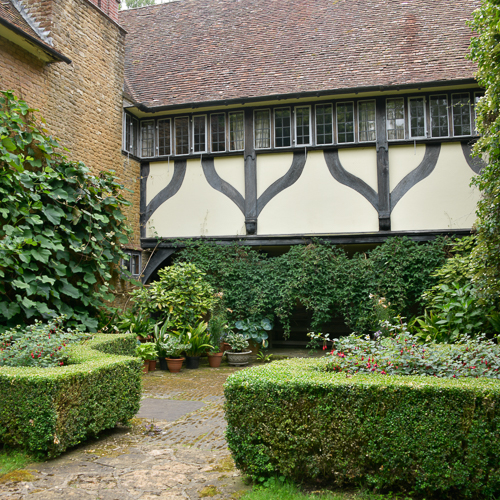 *
*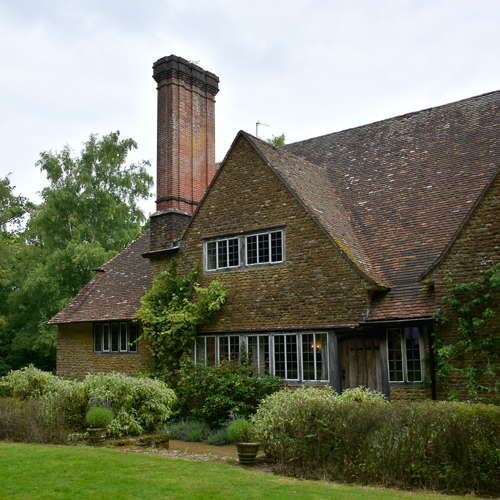
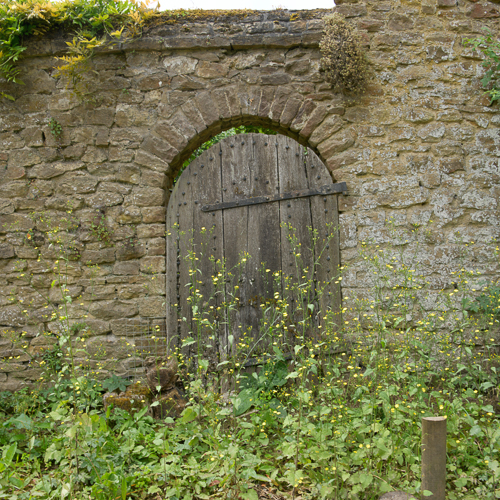
Two gates I found enchanting on the road to the house.
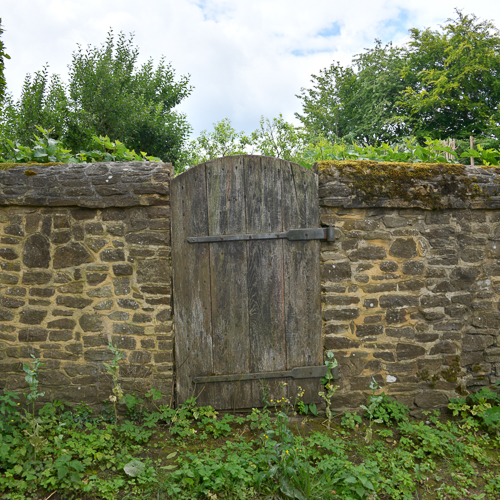
*
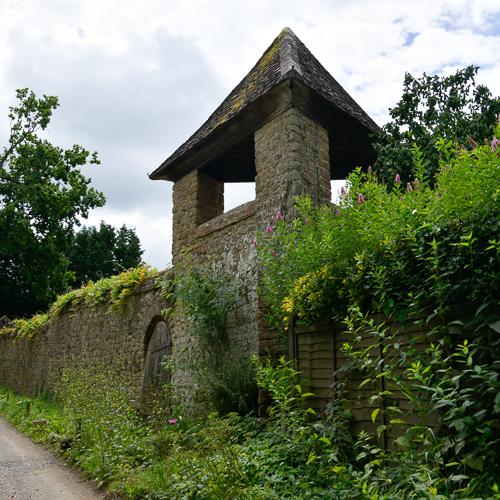
This tower was built on the neighboring property belonging to Jekyll’s mother to allow Gertrude to watch the thunderclouds when they rolled in.